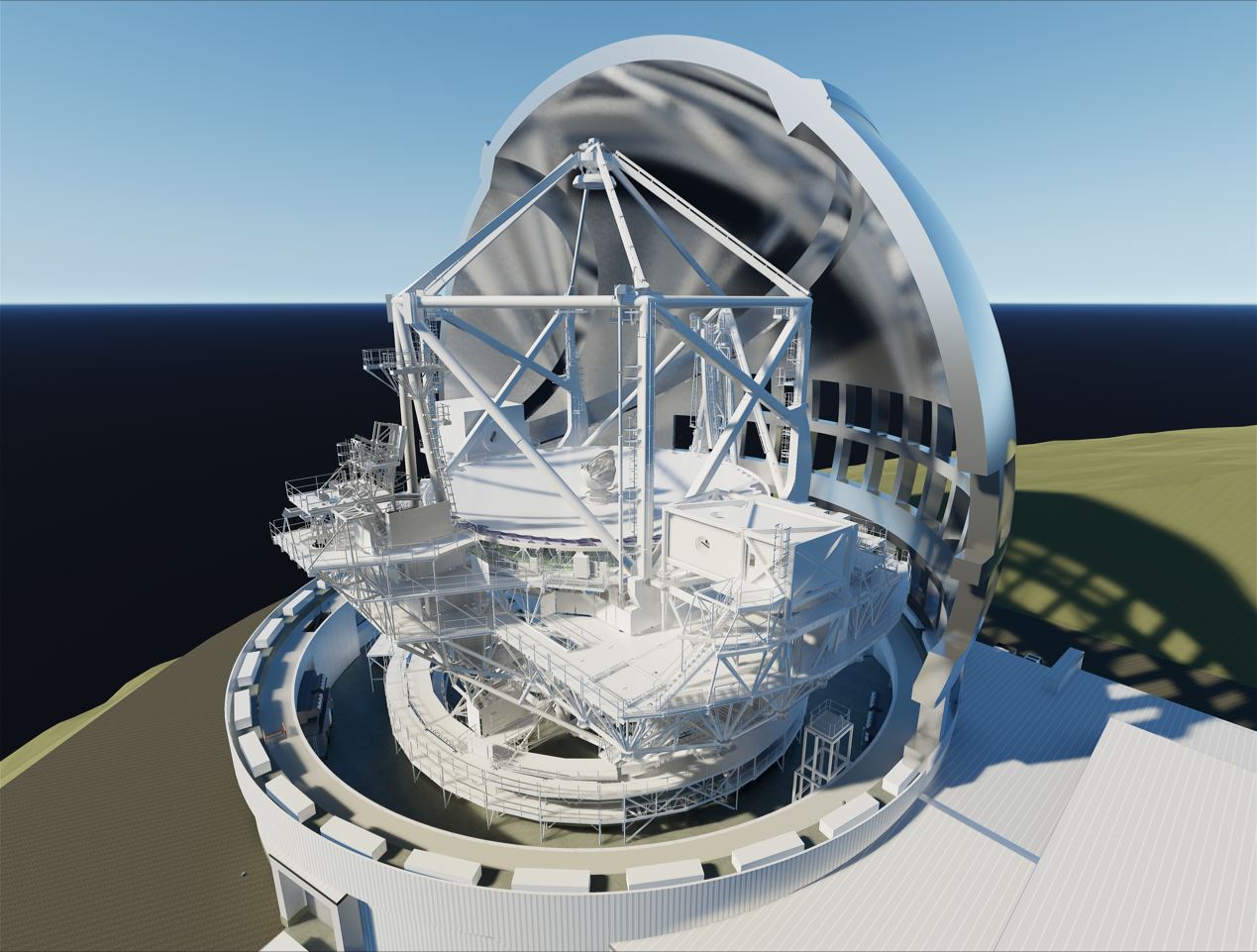

The Thirty Meter Telescope Project, in concert with its Scientific Advisory Committee (SAC), announces a call for white papers proposing design studies for new instruments, adaptive optics systems, or other technical developments that would significantly enhance the scientific capability of TMT beyond first-light.
Individuals and teams comprising members of the TMT scientific/engineering community are invited to submit white papers.
The proposed project should be placed in the context of the first-light TMT capabilities, which include the near-IR multi-conjugate adaptive optics system (NFIRAOS), the InfraRed Imaging Spectrograph (IRIS), the Wide-Field Optical Spectrograph (WFOS) and the capabilities of other current and future observatories (e.g., JWST, TESS, EUCLID, LSST, WFIRST, and other ELTs) in the post-2025 era.
White papers may address capabilities previously identified as priorities for TMT, which include high-dispersion optical spectroscopy, high-dispersion near-IR spectroscopy, multiplexed medium-resolution near-IR spectroscopy (presently considered for the IRMS instrument), extreme/high contrast adaptive optics/coronagraphy, mid-IR imaging and low-resolution spectroscopy, and high-dispersion mid-IR spectroscopy. However, the SAC welcomes submissions addressing novel areas or those which fall outside or between the existing scientific instrument requirements (TMT Observatory Requirements Document, Science Requirements Document).
In September, 2017, TMT will initiate a design study for an adaptive secondary mirror (AM2) which may be available during TMT's early light. The AM2 would facilitate Ground Layer Adaptive Optics (AO enhanced image quality for wavelengths 0.4-2.5 microns) over a large fraction of the unvignetted telescope field of view (15 arcmin diameter). The AM2 would also enable diffraction-limited images at mid-IR wavelengths (3.3-27 microns), and thus would likely serve as the facility mid-IR AO system. Instrument concepts that would benefit from this capability, as well as those that would operate behind the NFIRAOS AO system (or a future NFIRAOS upgrade), are encouraged.
All white papers will be reviewed by the SAC, who will recommend a subset for feasibility study funding by the TMT Project. Submitted white papers should provide a summary of the scientific goals and objectives of the proposed instrument development, a suggested instrument architecture, a brief description of the scope of work to be done to further develop the science case and study the instrument feasibility, a list of science and engineering team members, and should address the suitability of the proposal team for conducting the study. Innovative technologies may be highlighted. This is the first part of the process for identifying and developing the 2nd generation instruments.
White papers should be no more than 10 pages in length, including figures and tables, and should be submitted to whitepapers@tmt.org no later than March 21, 2018.
It is anticipated that SAC reviews of all submitted white papers will be completed during the second quarter of calendar year 2018. The SAC may request additional information from proposed study teams prior to completion of the reviews.
Please address any questions to whitepapers@tmt.org.